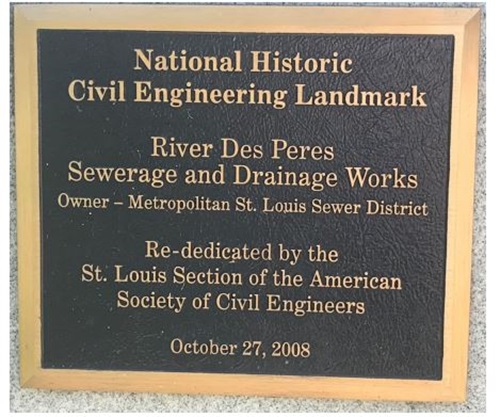River des Peres Sewage & Drainage Works
38 39 42.3 N
90 18 33.9 W
The River des Peres Sewage & Drainage Works, a 13-mile system of sanitary trunk sewers and drainage channels, was the largest undertaking of its kind when completed between 1924 and 1931.

In the early 1900s, St. Louis public health officials recognized River Des Peres as an open sewer that received wastewater and stormwater drainage. The River Des Peres Sewage & Drainage Works is a system of tunnels, pipelines, and canals built to provide proper disposal of sewage and relief from flooding, and to eliminate unsanitary conditions in the city.
The River Des Peres project solved the problems of both storm drainage and sanitary sewage conveyance, separating sewage from surface water systems. Among the many innovations associated with this project are advanced techniques of hydrologic computations and use of large diameter (32 foot), buried, reinforced concrete pipe.
Today, the River Des Peres Sewage & Drainage Works provides the backbone for the 110-square-mile St. Louis drainage basin.
Facts
- The river runs through Forest Park - the site of the 1904 World's Fair. A portion of the western end of the channel was enclosed with a wooden box to hide the unsightly sewer. Cost estimates indicated that a more complete solution would cost millions of dollars, so officials did not pursue additional improvements.
- In 1915, a tropical storm dropped 10.6 inches of rain on St. Louis in just 17 hours, causing a devastating flood. Claiming 11 lives and the homes of 1,025 families, the flood focused public and government attention back onto the problems of the river.
- The St. Louis government named W.W. Horner engineer in charge in 1916. He immediately set about implementing plans that had been developed as early as 1910. Voters finally passed a bond issue in 1923.
- It took nearly a year to conduct property surveys and acquire right-of-way. The project formally began on January 19, 1924, when Mayor Kiel took the helm of a steam shovel and began digging the first diversion ditch.



